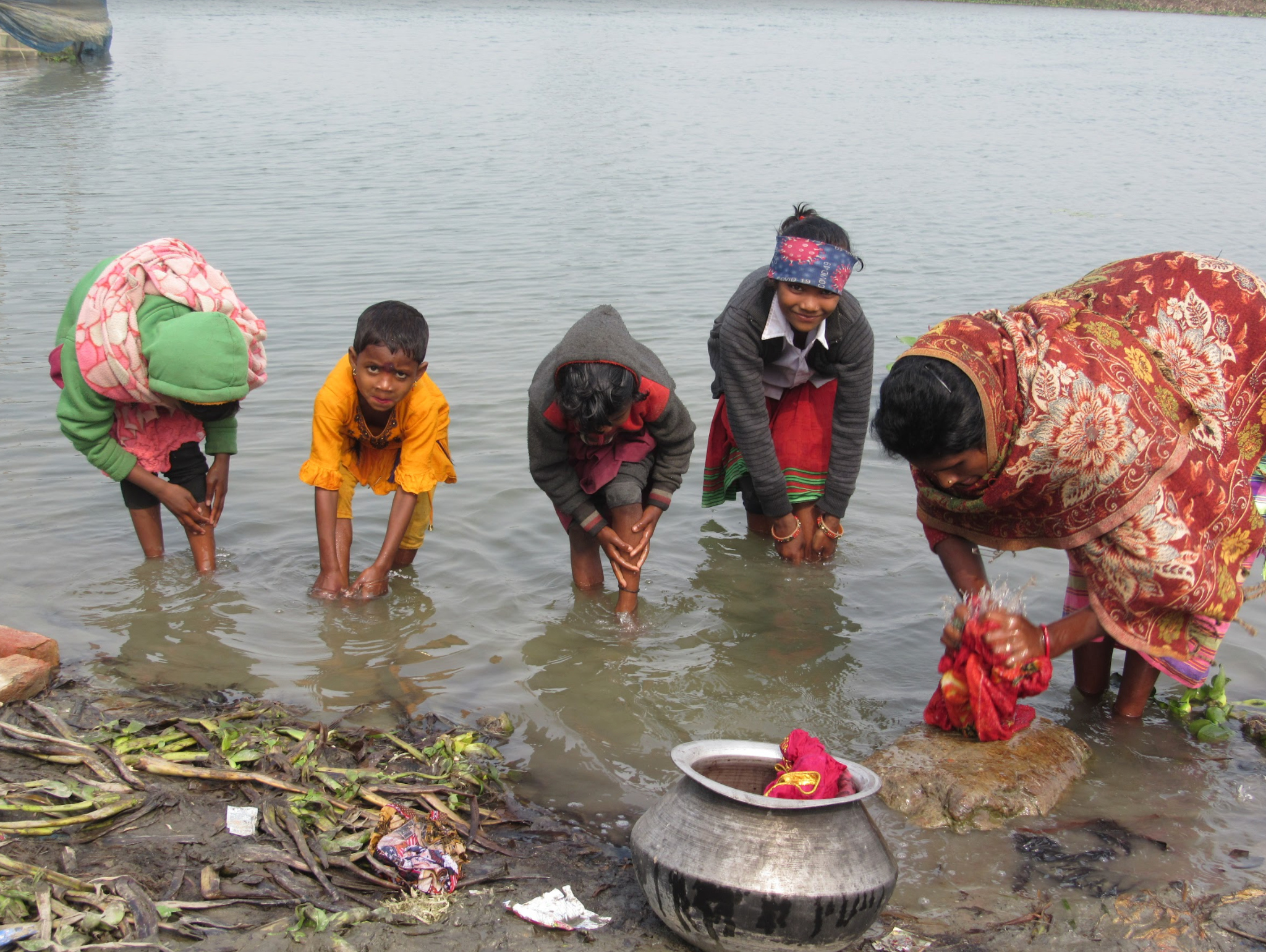Quenching Thirst and Nurturing Faith – Send Relief
Quenching Thirst and Nurturing Faith Send Relief


The Living Water Well Project: Providing Clean Drinking Water and Sharing the Gospel

In a mountainous South Asian state, many people lack access to safe drinking water. The Living Water Well Project focuses on 43 communities across nine districts in this South Asian country that are in great need of clean drinking water. Local Send Relief partners worked together to identify and assess the communities to confirm locations with the greatest need. Some of the communities had wells, but people lived too far away to have access to them. Many of the wells were contaminated with arsenic from groundwater run-off.
Providing Access to Clean Drinking Water
This project provided access to clean drinking water for more than 8,000 people. The goal was to provide people with clean drinking water and share the good news of the Living Water. While installing bore-wells, many of our local partner churches got together at the spot of the bore-well work to start with a word of prayer. In many non-Christian villages, they shared the gospel with villagers and have been invited to return to those villages to share more. In total, 7,000 people have heard the gospel, and 16 came to know Christ. Now that work is done, our local partners continue visiting these villages for ongoing discipleship.
Impact on Villagers
Among the villagers impacted is Kumar*, whose testimony underscores the transformative power of the project. Kumar’s village, home to around 300 families, previously relied on pond water for all their needs, a practice fraught with health risks. The introduction of a bore-well by Send Relief has provided clean drinking water and opened doors to the gospel. Kumar said, “Our village got the opportunity to hear about the love of God and Jesus. Just a month ago, I received Jesus and started following Him with two other new families.”
Similarly, a local pastor, Patel*, highlights the project’s role in fostering community engagement and gospel outreach. The bore-well projects have become platforms for volunteers from local churches to serve their communities, share their faith and cultivate a sense of unity and purpose.
Contributing to the Sustainable Development Goals
- Goal 6: Clean Water and Sanitation – The Living Water Well Project directly contributes to Goal 6 by providing access to clean drinking water for over 8,000 people in 43 communities.
- Goal 1: No Poverty – By addressing the basic need for clean drinking water, this project helps alleviate poverty and improve the overall well-being of the communities.
- Goal 3: Good Health and Well-being – Access to clean drinking water reduces health risks associated with contaminated water sources, leading to improved health and well-being.
- Goal 4: Quality Education – With improved access to clean drinking water, children in these communities can attend school regularly without falling ill due to waterborne diseases.
- Goal 17: Partnerships for the Goals – The collaboration between Send Relief and local partners demonstrates the importance of partnerships in achieving sustainable development.
As the Living Water Well Project continues to ripple through the lives it touches, its outcomes speak volumes. Because you give, Send Relief and its international partners can meet needs and change lives.
Published March 15, 2024
SDGs, Targets, and Indicators
-
SDG 6: Clean Water and Sanitation
- Target 6.1: By 2030, achieve universal and equitable access to safe and affordable drinking water for all.
- Indicator 6.1.1: Proportion of population using safely managed drinking water services.
-
SDG 3: Good Health and Well-being
- Target 3.3: By 2030, end the epidemics of AIDS, tuberculosis, malaria, and neglected tropical diseases and combat hepatitis, water-borne diseases, and other communicable diseases.
- Indicator 3.3.2: Number of new HIV infections per 1,000 uninfected population, by sex, age, and key populations.
- Indicator 3.3.5: Number of people suffering from water-related diseases.
-
SDG 4: Quality Education
- Target 4.7: By 2030, ensure that all learners acquire the knowledge and skills needed to promote sustainable development, including, among others, through education for sustainable development and sustainable lifestyles, human rights, gender equality, promotion of a culture of peace and non-violence, global citizenship, and appreciation of cultural diversity and of culture’s contribution to sustainable development.
- Indicator 4.7.1: Extent to which (i) global citizenship education and (ii) education for sustainable development are mainstreamed in (a) national education policies; (b) curricula; (c) teacher education; and (d) student assessment.
-
SDG 17: Partnerships for the Goals
- Target 17.17: Encourage and promote effective public, public-private, and civil society partnerships, building on the experience and resourcing strategies of partnerships.
- Indicator 17.17.1: Amount of United States dollars committed to public-private partnerships.
Table: SDGs, Targets, and Indicators
| SDGs | Targets | Indicators |
|---|---|---|
| SDG 6: Clean Water and Sanitation | Target 6.1: By 2030, achieve universal and equitable access to safe and affordable drinking water for all. | Indicator 6.1.1: Proportion of population using safely managed drinking water services. |
| SDG 3: Good Health and Well-being | Target 3.3: By 2030, end the epidemics of AIDS, tuberculosis, malaria, and neglected tropical diseases and combat hepatitis, water-borne diseases, and other communicable diseases. | Indicator 3.3.2: Number of new HIV infections per 1,000 uninfected population, by sex, age, and key populations. Indicator 3.3.5: Number of people suffering from water-related diseases. |
| SDG 4: Quality Education | Target 4.7: By 2030, ensure that all learners acquire the knowledge and skills needed to promote sustainable development, including, among others, through education for sustainable development and sustainable lifestyles, human rights, gender equality, promotion of a culture of peace and non-violence, global citizenship, and appreciation of cultural diversity and of culture’s contribution to sustainable development. | Indicator 4.7.1: Extent to which (i) global citizenship education and (ii) education for sustainable development are mainstreamed in (a) national education policies; (b) curricula; (c) teacher education; and (d) student assessment. |
| SDG 17: Partnerships for the Goals | Target 17.17: Encourage and promote effective public, public-private, and civil society partnerships, building on the experience and resourcing strategies of partnerships. | Indicator 17.17.1: Amount of United States dollars committed to public-private partnerships. |
Analysis
-
Which SDGs are addressed or connected to the issues highlighted in the article?
The issues highlighted in the article are connected to SDG 6: Clean Water and Sanitation, SDG 3: Good Health and Well-being, SDG 4: Quality Education, and SDG 17: Partnerships for the Goals.
-
What specific targets under those SDGs can be identified based on the article’s content?
- Under SDG 6, the specific target is Target 6.1: By 2030, achieve universal and equitable access to safe and affordable drinking water for all.
- Under SDG 3, the specific targets are Target 3.3: By 2030, end the epidemics of AIDS, tuberculosis, malaria, and neglected tropical diseases and combat hepatitis, water-borne diseases, and other communicable diseases.
- Under SDG 4, the specific target is Target 4.7: By 2030, ensure that all learners acquire the knowledge and skills needed to promote sustainable development, including, among others, through education for sustainable development and sustainable lifestyles, human rights, gender equality, promotion of a culture of peace and non-violence, global citizenship, and appreciation of cultural diversity and of culture’s contribution to sustainable development.
- Under SDG 17, the specific target is Target 17.17: Encourage and promote effective public, public-private, and civil society partnerships, building on the experience and resourcing strategies of partnerships.
-
Are there any indicators mentioned or implied in the article that can be used to measure progress towards the identified targets?
Yes, there are indicators mentioned or implied in the article that can be used to measure progress towards the identified targets:
Behold! This splendid article springs forth from the wellspring of knowledge, shaped by a wondrous proprietary AI technology that delved into a vast ocean of data, illuminating the path towards the Sustainable Development Goals. Remember that all rights are reserved by SDG Investors LLC, empowering us to champion progress together.
Source: sendrelief.org

Join us, as fellow seekers of change, on a transformative journey at https://sdgtalks.ai/welcome, where you can become a member and actively contribute to shaping a brighter future.







